
Europe and Central Asia – Regional Overview of Food Security and Nutrition 2023
Publication Series
Publications
055033316b184760ac1014117ea0254d.tmb-th600x450.jpg?Culture=en&sfvrsn=a62a48e8_3)
Promoting sustainable and circular bioeconomy through agriculture practice in Eastern Europe and Central Asia
12/2023
This report presents an overview of concepts related to bioeconomy and the benefits of their implementation in agriculture and shares agriculture production trends, bioeconomy initiatives and sustainable agriculture approaches from throughout the Eastern Europe and Central Asia region.
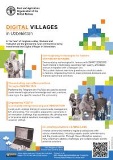
Digital Villages in Uzbekistan
01/2024
In Uzbekistan's Ferghana Valley, the rural communities of Novkent and Yuksalish are at the forefront of a remarkable transformation into Digital Villages. This leaflet explores how these areas are harnessing technology to revolutionize agriculture and empower youth.
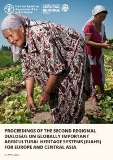
Proceedings of the Second Dialogue on Globally Important Agricultural Heritage Systems for Europe and Central Asia
12/2023
The Second Dialogue on Globally Important Agricultural Heritage Systems (GIAHS) in Europe and Central Asia aimed to promote the GIAHS Programme in the region, raising awareness on the potentiality of participating in the dynamic conservation of these sites. Speakers from all around the region discussed about traditional agricultural systems, bringing the experience of existing sites at different stages of recognition and potential ones that are still in the process of identification.

Generic master’s course curriculum on land consolidation and land banking
12/2023
The Generic master’s course curriculum on land consolidation and land banking: FAO Study and Recommendations is a powerful capacity development tool that will educate young land tenure professionals and existing specialists interested in implementing land consolidation and land banking projects. The report contains a structure for a course curriculum on land consolidation and land banking, including a list of modules, recommendations regarding teaching techniques and useful resources.
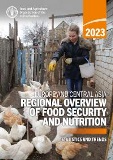
Europe and Central Asia - Regional Overview of Food Security and Nutrition 2023. Statistics and trends
12/2023
The 2023 Regional Overview of Food Security and Nutrition in Europe and Central Asia is the ninth Europe and Central Asia (ECA) report monitoring regional trends and progress made towards reaching Sustainable Development Goal (SDG) 2 food security and nutrition targets. SDG 2, often referred to as the “Zero Hunger” goal, aims to end hunger, achieve food security and improved nutrition, and promote sustainable agriculture.
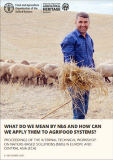
What do we mean by NbS and how can we apply them to agrifood systems?
12/2023
Proceedings of the technical workshop on nature-based solutions in Europe and Central Asia FAO acknowledges that nature-based solutions are cost-effective interventions that can enhance resilience in agriculture and food production while mitigating climate change and enhancing the environment. These strategies mimic nature by integrating the ecosystem functioning at a landscape scale to address socio-environmental challenges such as water scarcity, food insecurity and climate change adaptation

Biodiversity in Action — #3
11/2023
The third issue of Biodiversity in Action illustrates why the health of humans and the environment requires biodiversity and how all dimensions of food security depend on it, highlighting the risks for nutrition and health and the benefits for food and nutritional security.

Europe and Central Asia Gender Newsletter, October 2023 – Issue #12
10/2023
This issue of the FAO Europe and Central Asia Gender Newsletter reports on the updates regarding the gendered impacts of the war in Ukraine and gender-responsive earthquake recovery in Türkiye, International Day of Rural Women celebrations in the region, FAO's new resource guide to mainstreaming gender in climate investments, and the UN Food Systems Summit proceedings. The newsletter also includes insightful field stories from Türkiye, Kyrgyzstan, Albania and the Republic of Moldova.

Smallholders and family farms in Albania - Country study report 2019
06/2020
Small and very small farms are up to 2 ha in size, and large farms are those larger than 2 ha. Very large farms are 10 ha or more. Women represent 50 percent of those working in agriculture, but head around 6.5 percent of all farms. Agriculture production is completely dominated by smallholders and family farms, and women and men face different realities and needs. 2020, 164 p.

Smallholders and family farms in Armenia
09/2020
Farms in Armenia are small. Around 42 percent of family farms are smaller than 0.5 hectares. The average farm size of family farms in Armenia is 1.48 hectares. Agriculture is one of the most important economic sectors of Armenia. Agriculture is the biggest employment sector in rural communities – 68 percent of the employed rural population were involved in agriculture in 2015. Poverty is a serious concern. 2020, 178 p.

Smallholders and family farms in Georgia
09/2020
This report aims to analyse the development trend and current state of smallholders and family farms in the country and to study the current political priorities and policies affecting smallholders and family farms. It provides recommendations, mainly at the policy level, on how to further support the development of commercial family farms in Georgia and at the same time ensure, in general, inclusive growth, improved rural livelihoods, and reduction of rural poverty. 2020, 162 p.

Smallholders and family farms in Kyrgyzstan
09/2020
Agriculture in Kyrgyzstan employs 29 percent of all labour in the country. Its enormous small-scale production ensures the importance of the sector. More than 400 000 business units and more than 700 000 rural households produce over 95 percent of the total agricultural production in the country. This brings positive and adverse consequences. Small farm sizes is a serious problem for the development of agriculture but smallholders are a driving force in the agrarian sector. 2020, 144 p.

Smallholders and family farms in the Republic of Moldova
09/2020
Small-scale farming is a predominant model in the Republic of Moldova, and small farms (including family farms) play an essential role in the country’s agriculture and rural development and in the economy as a whole. Smallholders and family farms generate over 62 percent of the total volume of agricultural produce of the country, thus contributing fundamentally to overall food production and food security in the Republic of Moldova. 2020, 150 p.

Smallholders and family farms in Serbia
09/2020
Smallholders and family farms in Serbia are numerous and occupy considerable resources. Yet, the characteristics of farm managers are not conducive to the sustained development of the sector. Smallholders and family farms managed by women are, in many aspects, in an even worse position. Access of smallholders and family farms to inputs and services is generally low. Most of the smallholders and family farms in Serbia are active market participants. 2020, 171 p.

Smallholders and family farms in Tajikistan
09/2020
A constraint hampering the development of the dehkan farm is the low profitability of the agriculture sector, despite the fact that this sector as a whole plays a significant role in the economy of the country. Low profitability, frequent price hikes can cause financial planning challenges for smallholders and family dehkan farms. Other interrelated challenges include access to water and the deterioration of irrigation infrastructures that currently need major repairs. 2020, 160 p.

A wake-up call for impact: Animal health and production strategy for FAO Regional Office for Europe and Central Asia 2020–2025
01/2021
The urgent need for a positive impact on the livelihoods of livestock keepers is elaborated in this Regional Strategy for Animal Health and Production for FAO Regional Office for Europe and Central Asia (REU). This strategy aims to present the main aspects of REU’s work on livestock and includes three pillars – animal health, animal production, and antimicrobial resistance (AMR).

Land consolidation
07/2021
This legal brief on land consolidation is based on the guidance contained in the Voluntary Guidelines on the Responsible Governance of Tenure of Land, Fisheries and Forests in the context of national Food Security (VGGT). The brief summarizes the FAO Legal Guide on Land Consolidation: Based on regulatory practices in Europe, as well as relevant FAO and international experiences.
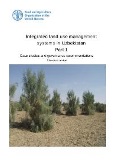
Integrated land use management systems in Uzbekistan – Part 1
06/2023
This is a literature review on land use and integrated land use management systems in Uzbekistan. The review aims to synthesize and examine the state of knowledge and the scope for establishing various integrated resource and land use management strategies.

SDG Localization in Europe and Central Asia: Guidelines to support subnational development planning and budgeting
10/2023
The “SDG localization in Europe and Central Asia – Guidelines to support subnational development planning and budgeting” provides guidance to support local authorities and other relevant stakeholders in subnational development planning and budgeting, in the context of SDG localization.
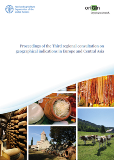
Proceedings of the Third regional consultation on geographical indications in Europe and Central Asia
10/2023
On 20 December 2022, FAO and oriGIn hosted the Third regional consultation on geographical indications in Europe and Central Asia. Some 111 representatives from 34 countries of geographical indications (GIs) groups, national intellectual property offices and the World Intellectual Property Organization (WIPO), other public authorities, as well as geographical indication experts participated in the event.
